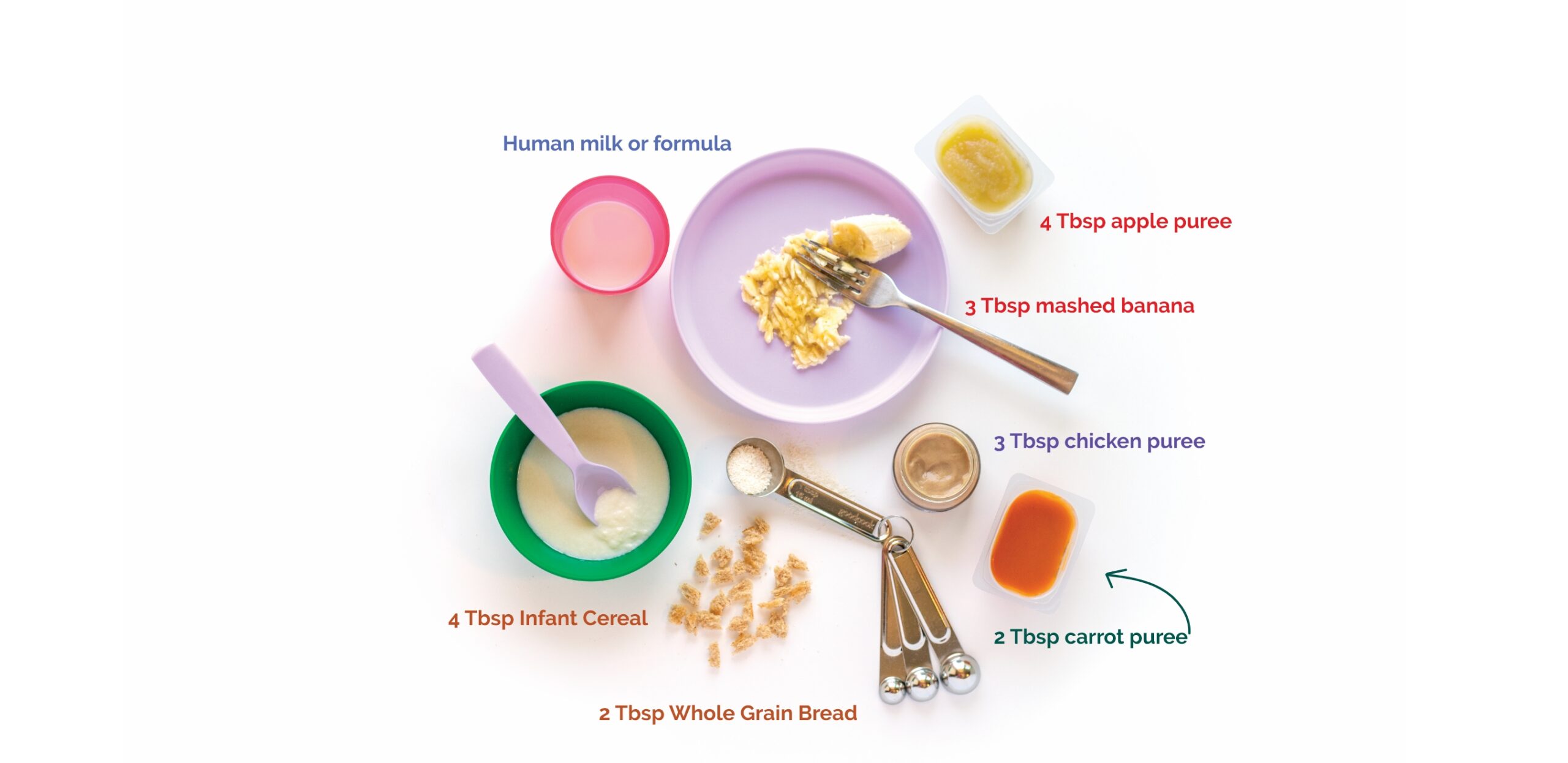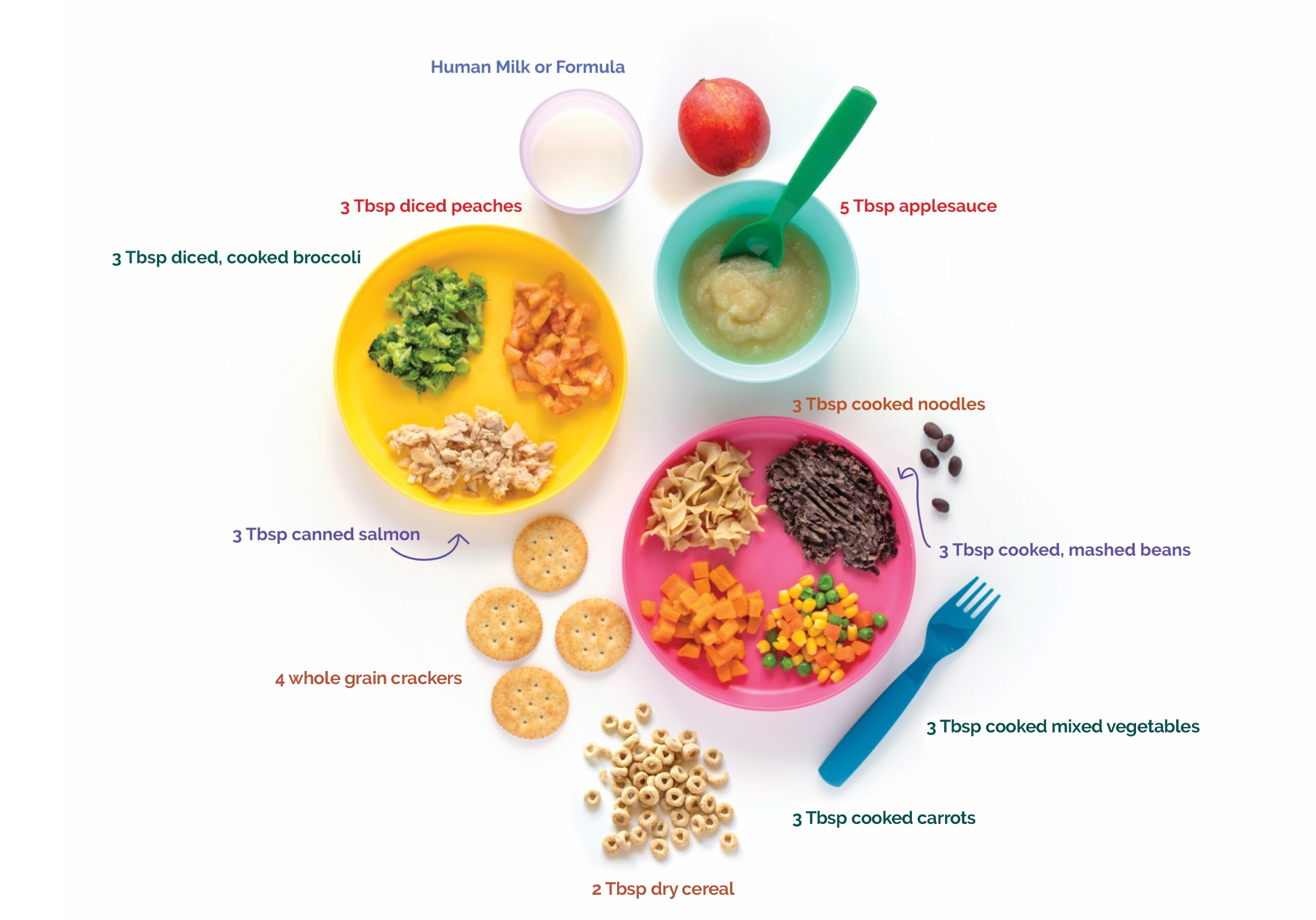Iron
in your diet
Iron is an important mineral that carries oxygen through our bodies. Most people are able to get enough iron from their food to meet their body’s iron needs, but it has to be the right food.
Eating foods that are high in iron may help you or your children have more energy, feel more rested, and be healthier overall. Children with healthy iron levels are able to learn better.

Foods
high in iron
Meats
Beef
Turkey
Chicken
Pork
Fish
Oysters
Shrimp
Vegetables
Broccoli
Spinach
Beans
Lentils
Turnip Greens
Mustard Greens
Grains
WIC Approved Cereal
Whole Grain Iron-Fortified Bread
Brown Rice
Whole Wheat Pasta
Whole Wheat Tortillas
Other
Tofu
Raisins
Prunes
Apricots
Figs

Tip
Foods with small or soft pieces of meat, like pasta with meat sauce, chili, or meatloaf are usually easier for children to chew.
How to
get enough iron
- Eat a variety of foods during the day. Most healthy foods have small amounts of iron, so eat foods from all of the food groups.
- Only eat small amounts of chips, cake, cookies, and candy. Don’t drink too many sweet drinks.
- Avoid drinking tea and coffee. These drinks keep your body from getting iron from foods.
- Remember to take any vitamin or iron supplement if recommended by your health care provider.
- Eat a vitamin C food when you eat iron rich foods. Vitamin C helps your body take in iron.
– Oranges
– Grapefruit
– Tomatoes
– Bell Peppers
– Broccoli
– Potatoes
– Strawberries
– WIC Approved Juices

Signs of
low iron
- Fatigue/out of breath while walking up stairs
- Pale skin
- Brittle fingernails
- Inflammation or soreness of the tongue
- Dizziness
- Restless leg syndrome
- Craving non-food items
- Poor appetite, especially in children
Tip
Limit children to two cups of milk per day. Milk can make your child feel full and reduce the intake of iron rich foods.
Iron
in your diet
Iron is an important mineral that carries oxygen through our bodies. Most people are able to get enough iron from their food to meet their body’s iron needs, but it has to be the right food.
Eating foods that are high in iron may help you or your children have more energy, feel more rested, and be healthier overall. Children with healthy iron levels are able to learn better.

Foods
high in iron
Meats
Beef
Turkey
Chicken
Pork
Fish
Oysters
Shrimp
Vegetables
Broccoli
Spinach
Beans
Lentils
Turnip Greens
Mustard Greens
Grains
WIC Approved Cereal
Whole Grain Iron-Fortified Bread
Brown Rice
Whole Wheat Pasta
Whole Wheat Tortillas
Other
Tofu
Raisins
Prunes
Apricots
Figs

Tip
Foods with small or soft pieces of meat, like pasta with meat sauce, chili, or meatloaf are usually easier for children to chew.
How to
get enough iron
- Eat a variety of foods during the day. Most healthy foods have small amounts of iron, so eat foods from all of the food groups.
- Only eat small amounts of chips, cake, cookies, and candy. Don’t drink too many sweet drinks.
- Avoid drinking tea and coffee. These drinks keep your body from getting iron from foods.
- Remember to take any vitamin or iron supplement if recommended by your health care provider.
- Eat a vitamin C food when you eat iron rich foods. Vitamin C helps your body take in iron.
– Oranges
– Grapefruit
– Tomatoes
– Bell Peppers
– Broccoli
– Potatoes
– Strawberries
– WIC Approved Juices

Signs of
low iron
- Fatigue/out of breath while walking up stairs
- Pale skin
- Brittle fingernails
- Inflammation or soreness of the tongue
- Dizziness
- Restless leg syndrome
- Craving non-food items
- Poor appetite, especially in children
Tip
Limit children to two cups of milk per day. Milk can make your child feel full and reduce the intake of iron rich foods.























